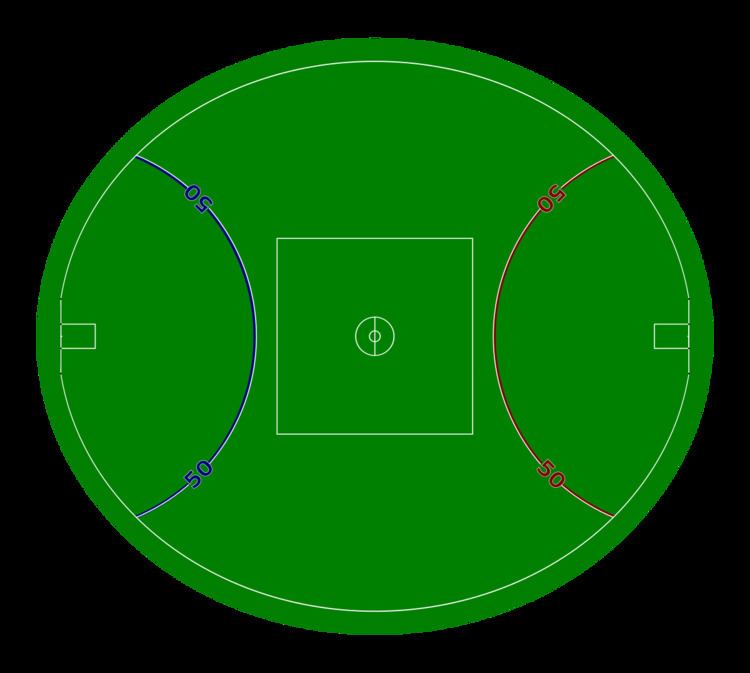 | ||
An Australian rules football playing field is a venue where the sport of Australian rules football is played.
Contents
The playing field is typically a large oval-shaped grass surface (often modified cricket fields). These fields may vary especially for variations of the game. However, for official Australian Football League matches, strict requirement specifications must be met for stadiums.
Ground dimensions
Australian rules football grounds, even at the highest level of the game, have no fixed dimensions. For senior football, the playing field is an oval, typically between 135–185 metres long goal-to-goal and 110–155 metres wide wing-to-wing. Grounds can vary from long and narrow to almost circular, and are not necessarily symmetrical, depending upon how and where the field was constructed. At least 5 metres of space between the boundary line and any fence is required for safety.
Smaller fields are generally used for junior football; some are purpose-built, and some are temporarily marked out within the confines of full-sized oval; as for a senior match, there are no fixed dimensions for a junior-sized field. The Western Australian Football Commission advises that a good rule of thumb is to set the length of the field equivalent to 3½ times the length of an average kick of the age group playing.
Ground markings
A top-level Australian rules football ground has the following markings:
Grounds at lower or junior levels, particularly small grounds, may lack some of these markings.
Goal posts
At each end of the ground there are two goal posts, spaced 6.4m (7yds) apart; these are conventionally painted white. A further 6.4m (7yds) on either side of these are behind posts; the behind posts are shorter than the goal posts; additionally, in South Australia it is customary for behind posts to be painted red. 5 metres in height. All posts are typically padded with wall padding to minimise injury due to players colliding with them.
Surface
Playing surface is a controversial issue in Australian rules football due to possible injuries caused to players moving at high speed including marking, jumping, turning and being tackled without protective padding. For these reasons the playing field standards imply use of lawn as a surface.
Purpose-built stadiums
Almost all Australian rules football fields are of a suitable size and shape for cricket; and in the majority of cases, the fields are used for cricket in the summer and Australian rules football in the winter, a seasonal strategy which is rooted in the history of Australian sport. As a consequence of this, there are very few fields which were purpose-built for and used by Australian rules football to the exclusion of cricket and all other sports.
However, there are many grounds – particularly those built more recently – which were built with Australian rules football as the primary intended purpose, but upon which other sports, including cricket, have been played.
Variations
Variations of the standard field dimensions and layout exist. For junior levels, smaller fields are often used. Rectangular fields have also been used in the past in Australia and also overseas, as well as adapted fields from other sports such as Association Football and American Football.
